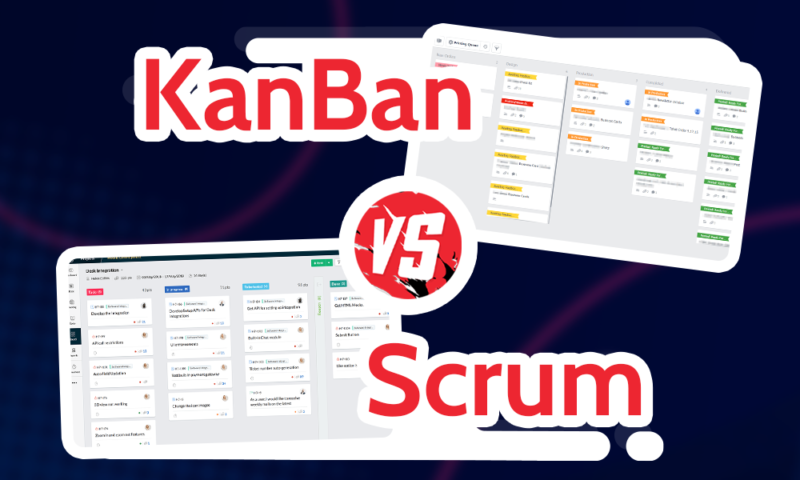Kanban vs Scrum in 2024: What’s the Difference & Which Is Better?
This article focuses on two popular Agile methodologies: kanban and scrum. Not only will we look at their differences, we’ll identify which method is better. Keep reading for the kanban vs scrum head-to-head.
Kanban vs scrum: the age-old battle of Agile methodologies. Well, more like the three-decade battle, as the scrum framework didn’t spring to life until the 1990s. Today, both methods are commonly used in project management, and for some, it’s not quite clear what their differences are or which one is the best to use for project management.
Key Takeaways:
- Neither the scrum nor the kanban method is better. Which one you should use depends on the type of projects and tasks you wish to complete.
- Scrum is great for planning future “sprints” (clusters of work), and as a way to constantly measure production and add continuous improvement to your workflow by having daily meetings and open communication.
- Kanban excels at offering a structured overview of the entire process (which seldom changes), helping users easily identify each step of the project’s process.
The goal of this article is to first define what kanban and scrum are, highlight their core differences, and then let you know which of them is better for you. “Better” depends on what type of projects and tasks your teams are working on, as that determines which method you should go for — and sometimes the answer will be both.
Kanban vs Scrum: The Basics
Let’s begin this kanban vs scrum piece by highlighting some core differences between the two project management methodologies. While both of them seem similar, the way they’re used for productivity is not the same.
For example, kanban (with the use of a kanban board) is designed to divide the steps of a project into sections, starting with the first step of the project and finishing with the last. This creates a smooth, continuous flow that helps project managers identify how well a project is progressing.
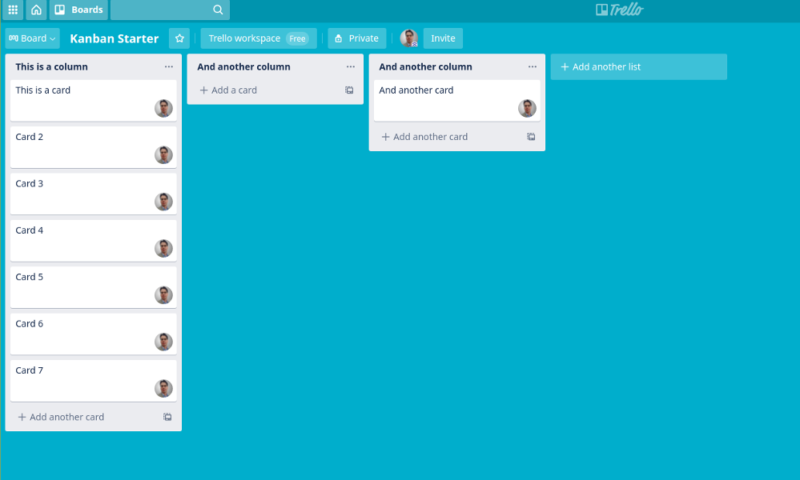
Rather than using a step-by-step approach, scrum provides a more intense analysis of complex tasks and projects. The foundation of scrum is short productivity cycles (known as sprints), which typically last one to four weeks. Sprints tend to be split between scrum teams, which are led by a scrum master.
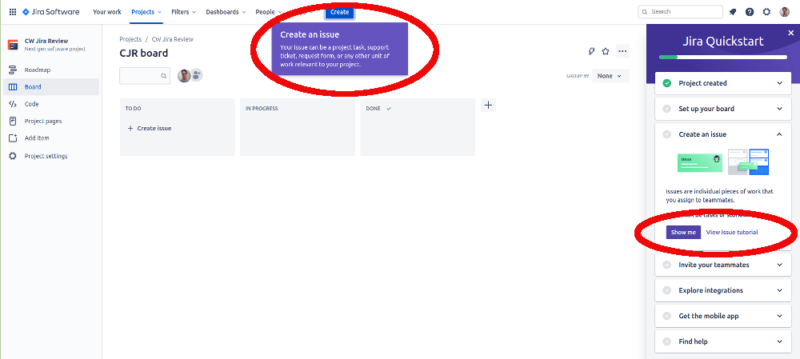
To visualize the difference between kanban and scrum, think of it like this: The kanban method is built on stepping stones. Your team can’t progress to the next stone until the task on the current stone is complete. The scrum method involves working on several little stones at once, allowing them to gradually progress forward to the next cluster of work.
What Is Scrum?
Scrum processes are much younger than the kanban method. The scrum philosophy was born around 1986 and referenced by professors Hirotaka Takeuchi and Ikujiro Nonaka. Jeff Sutherland put the theory into practice in 1993, initially using it for software development, although today scrum methodology is used in a wide variety of industries. Learn more in our Scrum history guide.
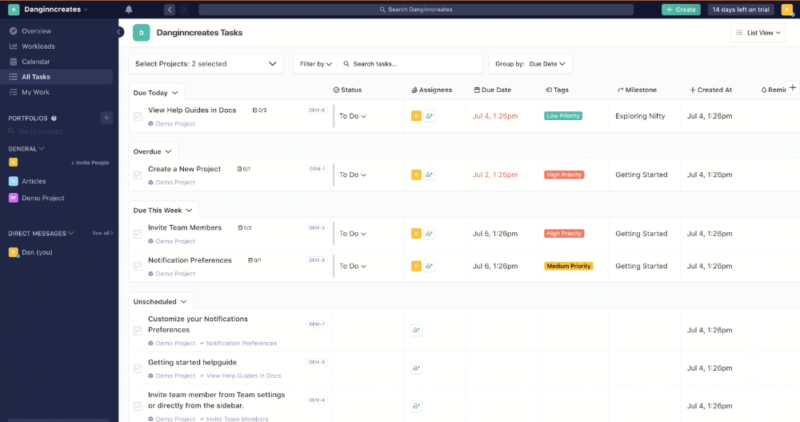
What is scrum exactly? Scrum is a framework within Agile methodology that focuses on breaking projects down into multiple small tasks with the aim of continuous process improvement as the project moves forward. To further differentiate between scrum and agile check out our guides on what is Agile, as well as, scrum vs agile.
The scrum framework is led by a product owner. The product owner creates a product backlog, which is a list of tasks that needs to be completed for the final delivery of the project (often referred to as a product).
The person who oversees the backlog is the scrum master, who directs the scrum team with daily meetings to discuss progress and offers constant feedback on the development of the tasks.
Once the tasks within the backlog are defined, sprint planning can begin, which means organizing what work needs to be done within a task and creating a cycle time (how long it will take to complete).
Sprints are assigned to the scrum teams, and it’s common to have multiple teams working on different tasks with the goal of bringing the product together as quickly as possible.
How to Use Scrum
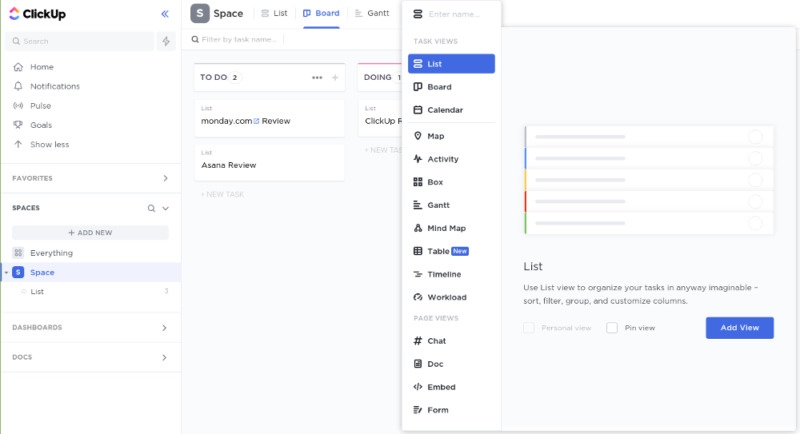
Let’s use software development as an example (which is the field scrum was originally intended for): with this approach, you can use scrum to create and deliver a software product quickly and to the highest quality.
The best way to use scrum is to first identify what product the development team (or teams) need to create, then create a list of actions (scrum backlog) you need to do.
The backlog should include different parts of the product that need developing. With scrum, you can divide these parts across the development team, creating a smaller, cross-functional team that focuses on one specific goal. Dividing tasks across teams means you won’t overload a single team, which helps you move forward more quickly through the project backlog.
Scrum methodology is built on transparency. For continuous improvement of processes, it’s encouraged to have open and honest communication, asking each development team to share what’s working and what needs improving in terms of approach and productivity.
The best way to keep track of the software development and the entire project is by using a scum board, as it gives a clear overview of everything that’s happening within the project.
To effectively use a scrum board for sprint planning, creating a sprint backlog and assigning sprints to your development team, you need the right software. We rounded up the best scrum software available, so you’ll be sure to find something that works for you.
What Is Kanban?
Unlike scrum, the kanban method dates back to the 1940s. It was first developed by industrial engineer Taiichi Ohno. Kanban is a Japanese word that translates to “sign board.” In the kanban workflow, users create boards for the projects they’re working on. The kanban method offers a simplified overview of how work is developing and helps everyone keep on track.
Within each board is a range of sections. As a simple example, sections may include “to do,” “doing” and “done.” Kanban teams are assigned to the boards, with each member of the team being responsible for tasks (known as “cards” in kanban).
Continuing with the example, a kanban manager will assign a “work ordered” card to a team member. The team member then moves the card to “work in progress” as soon as they begin the task. Once they have finished the task, the card is placed in “work complete.”
How to Use Kanban
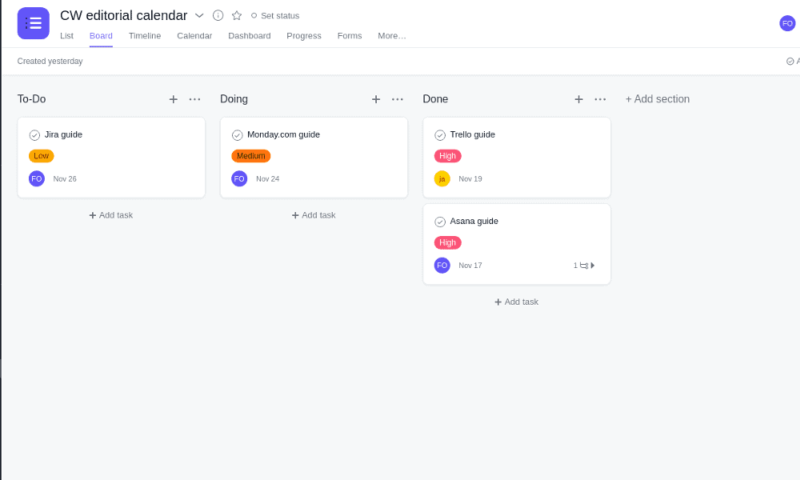
The purpose of kanban is to create clear, understandable tasks and assign them to a team member who has the skills and experience to complete the task. Here at Cloudwards, we use the kanban method for our editorial processes. For example, let’s say part of your company writes about romance. You can name your kanban board “Romance Editorial.”
The first section of your board can be titled “Romance Articles,” and within that section can be a list of articles you would like your team to write. You can assign each article to different team members and set a deadline for when the article should be complete.
To ensure you know exactly where each writer is in the process, you have other sections such as “writing,” “first draft complete” and “submitted to editor.” Once the article is complete, the card is placed in the final section of the kanban board.
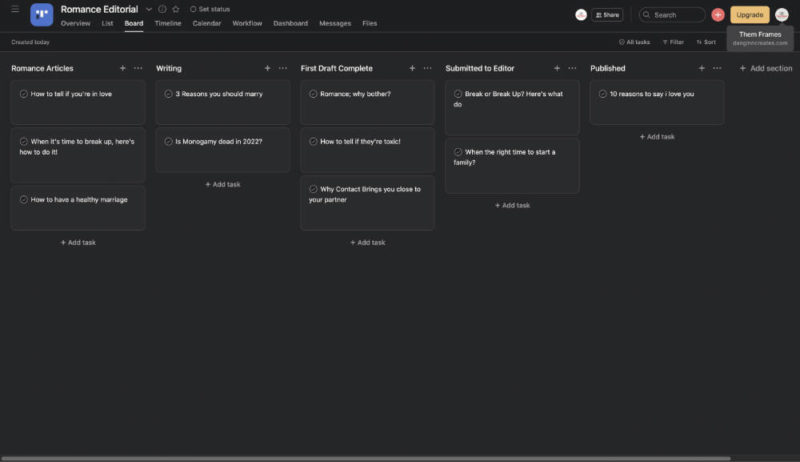
As new articles develop, just repeat the process, which creates a free-flowing river of productivity for you and your kanban teams. Check out the best kanban boards available with our selection of the best kanban tools for project development.
Other Popular Agile Methodologies
We’ll use this section to share other frameworks that fall within Agile practices. There are as many as 50 different Agile frameworks; however, we’ll only share some of the most popular practices.
Scrumban
Scrumban is a combination of scrum and kanban. Put into practice, teams tend to use traditional scrum processes like sprints. However, instead of using a scrum board, they use kanban boards to monitor progress and improve processes.
Extreme Programming (XP)
XP is broken down into five values: communication, simplicity, feedback, courage and respect. It’s designed for software engineers and is used to create a healthy work balance for software developers with the goal of producing the best product possible.
Feature-Driven Development (FDD)
FDD is a methodology that involves creating biweekly software models that include specific features within each model. This Agile method is mainly deployed by advanced software design teams, as documenting each step of the model requires a more knowledgeable and rigorous approach.
Best Project Management for Scrum: Jira
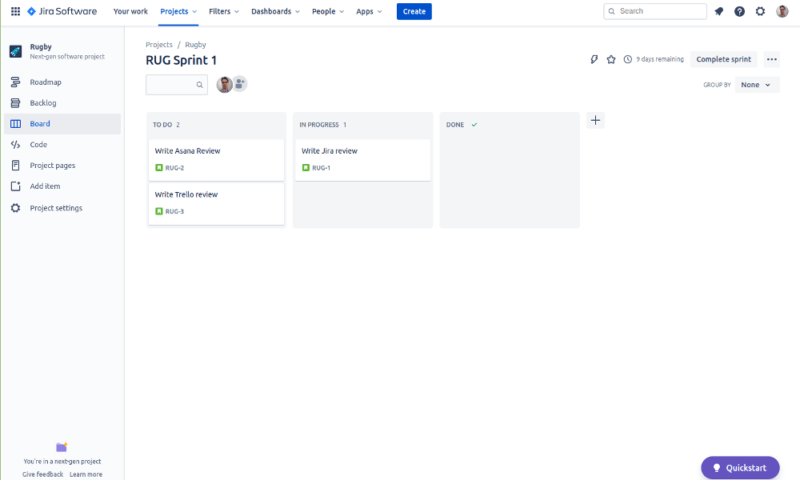
More details about Jira:
- Pricing: Free; Premium plan costs $14.50 per month
- Provider website: atlassian.com
Pros:
- Good free plan
- Excellent scrum tools
- Easy to use
Cons:
- Loaded with jargon
Out of the many project management software tools we have reviewed, Jira easily ranks as the best option for anyone using scrum. Even though it’s a good piece of software for a range of project management styles, Jira is clearly geared toward software development.
For the project manager reading this, you’ll be pleased to know that Jira offers its scrum board for free. It’s a well-designed board that allows you track tasks, implement sprints and create a road map for long-term projects.
It’s possible to record and track issues, which is useful as scrum relies heavily on the constant improvement of a product. Users can share the issues with other members and use them as feedback at the daily scrum meetings.
Great Ease of Use for Scrum Teams
In the world of scrum methodology, Jira has developed the smoothest scrum-based software we have tested. Putting it up against ClickUp (read our ClickUp review) and monday.com (read our monday.com review), Jira’s software is free-flowing and easy to use. We seldom encountered crashes or bugs, and navigating the scrum board was fun and felt intuitive.
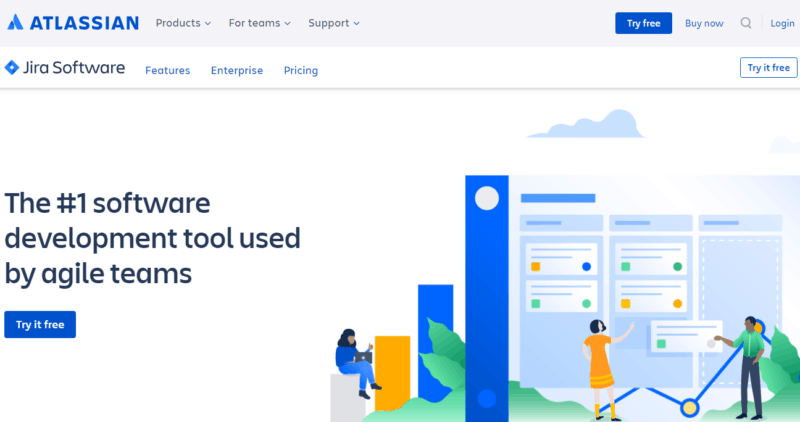
Jira’s scrum tools will no doubt help you fulfill a product or project. However, the company uses a little too much inside jargon for our taste, though those already familiar with scrum practices likely won’t have an issue.
For those new to the framework, it’s smooth sailing once you understand the terminology — plus, Jira offers a guide that includes a glossary. Learn more about the software by reading our Jira Review or give the free plan a try.
- Max. 10 users. unlimited boards, reports and insights; backlog; basic roadmaps; 2GB of storage; community support
- Annual price is for 10 users; with more than 10, annual pricing changes based on the number of users. Monthly pricing changes with teams over 100.
- Annual price is for 10 users; with more than 10, annual pricing changes based on the number of users. Monthly pricing changes with teams over 100.
Best Project Management for Kanban: Trello
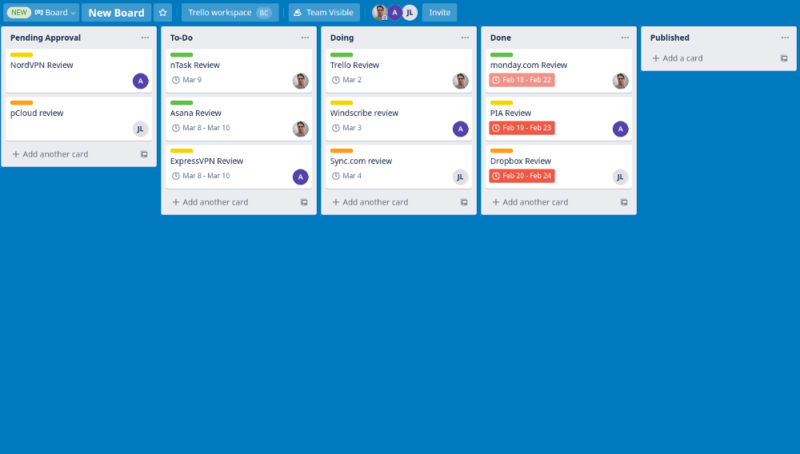
More details about Trello:
- Pricing: Free; Premium plan costs $10 per month per user.
- Provider website: trello.com
Pros:
- Awesome free plan
- The best kanban board
- Easy to use
Cons:
- Limited features beyond kanban
Kanban relies on simplicity, and beyond a simple project process, you need a tool that reinforces a simple approach to task management: Say hello to Trello. Developed by Atlassian (the same parent company as Jira), Trello is a kanban tool that works straight out of the box.
Whether it’s for personal use or an entire team, Trello has all the features you need. You can create multiple boards, add an unlimited number of cards, and monitor your workload with an unlimited activity history. It’s also a great hub for team collaboration, as you can embed links in your task cards to Google Docs, for example.
Trello itself is very simplistic, in that there’s not much you can do with it beyond its basic features. However, it does have several integrations you can add to make it more powerful and versatile.
Most of them are third-party integrations, although Trello does have some of its own. The “butler” add-on helps generate automations by analyzing past activity, which is useful for removing the need to complete those niggling tasks manually.
Trello’s Free Kanban Board
Other than ease of use, Trello’s standout feature is its full-featured free version. You can add useful information to your task cards that help improve your communication, set clear outlines for each task and assign tasks and add due dates.
You also gain access to Trello templates, which make it much easier to create new boards that align with your project. It’s no wonder Trello made it into our best free project management software article.
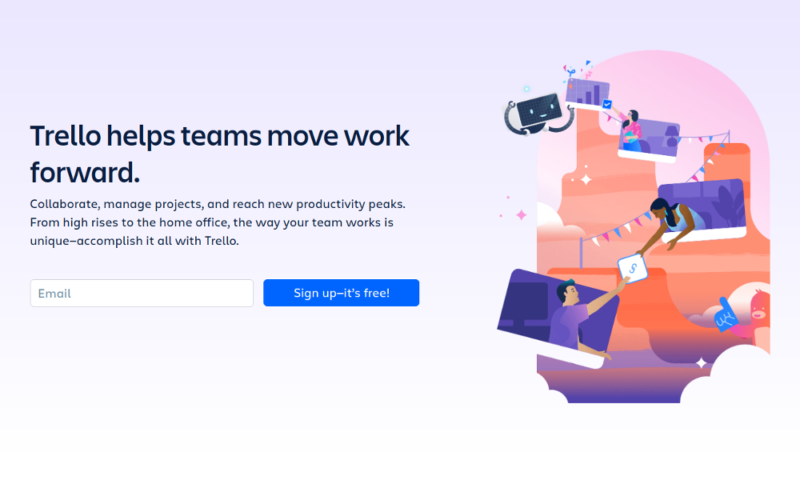
If you’re using kanban and kanban alone, there’s no other option worth considering. While it doesn’t offer scrum, Gantt and other popular views, it doesn’t need to. Rather than being a jack of all trades, Trello is the master of one. You can learn more about the service by reading our full Trello review.
- Unlimited users, 10 boards, Unlimited power-ups, Unlimited storage
- Price is per user, Unlimited boards, Custom fields, Invite guests
- Price is per user, Several new views
- Price is per user, Advanced admin & security settings
Final Thoughts: The Scrum-Kanban Matchup
Both scrum and kanban will help you achieve your goals. However, the question remains, which one is right for you? Simply identify your needs and pick the right framework for you and your team.
If you’re working on complex projects that need breaking down, then scrum will give you a hyper-analytical perspective on the progress of your project.
On the other hand, if you need a simple overview of your projects and tasks — one that will flow smoothly and help develop a system that encourages efficiency — then kanban gives you all of that.
When it comes to kanban and scrum, which method do you prefer? Which are your favorite software tools for scrum and kanban frameworks? Other than kanban and scrum, which methodologies do you like to use? Let us know in the comments. Thanks for reading.
FAQ
Kanban isn’t objectively better than scrum. For simple processes and workflows, kanban is likely the better option for your project management.
Traditionally, no. However, it’s not unusual to combine kanban and scrum (scrumban) to take advantage of scrum’s sprint planning and kanban’s simplified board.
For those new to Agile methodologies, yes. It’s easier to implement kanban and use a kanban board. That said, once you learn the fundamentals of scrum, it’s pretty easy to implement them.
